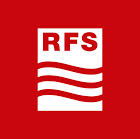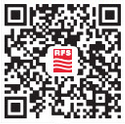Summer of Sport: Essential Connectivity for Major International Sports Events
Whether it is wireless connectivity for broadcast equipment, mobile data for fans to stay connected, or mission-critical connectivity for public safety, the need for robust and reliable connectivity at sporting events is essential and continuing to grow. In this blog, we look at where the connectivity needs are greatest and how municipalities organizing sporting events can ensure they have the infrastructure in place, which means everything runs smoothly.
The Connectivity Landscape for Sports Events
In 2023, the busiest day for internet traffic in Europe coincided with a Champions League match day, highlighting the impact of sports events on network demand. Major sporting events create significant challenges for network infrastructure, with sudden spikes in traffic causing potential disruptions, let’s look at how we can deal with this across the different locations impacted by sports events.
Gold star coverage in stadiums
Let’s start with the most obvious, stadiums and sporting venues. Being able to watch some of the biggest spectacles in sports is now only part of the experience. Consumers also want to be able to use mobile data to share those moments with friends and family at home. This means high-capacity coverage in stadiums is essential. Add to this, the need for comprehensive mission-critical coverage to ensure the safety of the thousands of fans and staff in attendance, and it is a complex problem to solve.
Wireless connectivity must extend throughout indoor and outdoor areas at stadiums, including areas like stairwells, tunnels, passageways, and underground rooms, which each need different treatment to ensure complete coverage.
The challenge is compounded by the stadium buildings themselves. Stadiums are often constructed from dense concrete and steel, which are difficult for RF signals to penetrate, making it more complicated to ensure complete site coverage. Plus, consideration needs to be given to interference from competing access points, systems, and stadium equipment. This can degrade wireless network quality and availability at stadiums.
The system needs expert design to deliver uninterrupted access to wireless connectivity for everyone who needs access. Ensuring the right in-building solutions to serve tens of thousands of supporters at one time is a crucial part of being able to deliver the experience visitors are expecting and organizers need for safety.
Transport
Alongside stadiums, one of the other pressured areas during large-scale events is the city’s transport network. Municipalities already deliver connectivity across railways, metro sites, and airports, but is it robust enough to deal with a huge uptick in traffic? How to tackle this varies from area to area.
Airports
Let’s look first at airports. RF planning is critical in this area to ensure site-wide coverage that can cope with demand even at peak times. Many airports bracing for large sports events make the decision to strengthen their infrastructure ahead of the event. For example, to cope with the Super Bowl in 2017, George Bush Airport worked with RFS to install turnkey services and solutions to improve wireless coverage at three airport terminals and in underground walkways ahead of the game. In just 23 days, more than 72 km (45.2 miles) of RFS cables were installed, along with 45 km (28.4 miles) of conduit in anticipation of the event.
Metro
Likewise, Metro sites require careful planning but also come with the additional challenge of delivering connectivity deep underground. There needs to be robust connectivity, both mission-critical as a fundamental safety requirement and consumer-facing. With passenger journeys becoming increasingly reliant on mobile data for ticketing, payments, and navigation, metro operators need to be mindful of providing infrastructure to support this.
At RFS, we combine RF planning expertise that understands how to deliver complete coverage with best-in-class radiating cable solutions. This is why RFS cable solutions are the go-to solution for metros with RADIAFLEX installed across deployments that serve a combined daily ridership of over 134 million.
Rail
Although similar to Metro, connectivity for rail has a number of unique requirements. Infrastructure that can deliver connectivity over long distances without compromising coverage at any point is the priority. Again Mission-Critical communication here is essential. Just how essential was highlighted days before this year’s opening ceremony in Paris with arson attacks hitting several lines. This underscores how crucial it is to install mission-critical cable with fire safety in mind.
Maintaining the view
For cities hosting sporting events, it is not just the stadiums and transport networks that will experience higher traffic but many of the area’s tourist attractions. From a communications point of view, they need to maintain the connectivity visitors expect, but they need to do this without having a major visual impact. A great practical example of delivering a solution for this type of problem is at Eiffel Tower.
Did you know there are over 1,000 meters of RFS cable running through the Eiffel Tour to support the broadcast equipment at the top? Choosing equipment that can be concealed without compromising on the connectivity and coverage needed is a challenge for site operators. At RFS, we offer cable for both broadcast and communication that can be discreetly installed, as well as a wide variety of services to design a system that delivers connectivity without being an eyesore.
Wireless Connectivity for Sports Broadcast
On the topic of broadcast, wireless connectivity has transformed sports broadcasting. Wireless equipment at events allows for closer, higher-quality footage than ever before. However, that footage needs to be transmitted in near real-time for both big screens inside venues and fans watching at home. At RFS, we have a range of technologies that support live broadcast set-ups that require high capacity to ensure the connectivity piece for live sports broadcasting runs smoothly.
For the fans at home, our broadcast cable is used around the world to support the ongoing transmission of events to millions of fans. Despite the rise in streaming popularity, traditional broadcasting is still a huge part of sharing sport around the world, and the equipment, therefore, needs to be in place to support this.
Keeping with the sporting theme, RFS supplied 9” cable at the Wertachtal transmitter site in Bavaria, Germany, to support broadcasting for the 1972 Olympic Games in Munich. From 1972 to 2013, this was the biggest shortwave broadcasting facility in Europe and is still operating 50 years later without performance degradation. This is the case at hundreds of sites worldwide.
Mission Critical Connectivity for Public Safety
Mission-critical connectivity is essential for ensuring public safety during major sporting events. However, delivering ‘true’ mission-critical capability is not simply a case of deploying robust infrastructure that works on the right frequencies. It is about building redundancy and backup features to ensure that communications equipment can continue to work should the worst happen.
This means creating a bullet-proof mission-critical system, and at RFS, we pull in over a century of expertise in developing equipment that is built to last and built to continue working in a worst-case scenario. This includes our HYBRIFLEX cable which protects the power supply to remote devices ensuring we keep continuous power to the network. It could be using our CPR-certified fire-resistant cables, which enable the network to operate during extreme temperatures and ensure no burning droplets that could accelerate a fire or emit toxic gases that further endanger life to the environment.
There are multiple ways that infrastructure can be tailored to suit the needs of mission-critical deployments. The key is to understand the specific risks, look at what that worst-case scenario looks like, and put in place equipment that is designed to mitigate the risks. When it comes to events, the key is to ensure that the mission-critical infrastructure can support the scale of the event to allow a smooth and effective response should the worst happen.
Conclusion
The evolution of connectivity in major international sports events has revolutionized the way these spectacles are organized, broadcast, and experienced. From robust stadium networks to mission-critical systems for public safety, connectivity solutions significantly impacted every aspect of these events. We spoke to a leading technology journalist with a background covering telecoms, sport, and broadcast who gave his view:
“The game has changed for cities looking to host major sports events. There is no longer just a demand to ensure adequate facilities, transport, and accommodation for the thousands of people that descend on their city, but comprehensive connectivity for a range of applications.
Whether it is uploading content to social media or broadcasting live on 5G, modern sports events, as we have seen over the summer, cannot function without a robust network underpinning them. Spectators, broadcasters, and competitors all demand strong connectivity. Without it, the sporting experience is diminished for all - and fans will accept no less than a robust and reliable experience.
Add to this the mission-critical requirements that are fundamental for cities to maintain the safety of all involved in the events, and it is clear that for cities playing host the sports events of the future, connectivity needs to be a consideration near the very top of their priority list.”


